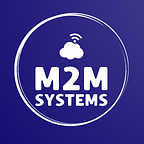Know the difference between NB-IoT vs. Cat-M1 for your massive IoT deployment
Organizations looking to deploy a very high volume of low-complexity, connected devices, known as Massive IoT (Internet of Things), have several options available to them for connectivity. Understanding the differences in available offerings is important when it comes to selecting the option that best suits the requirements of the deployment.
What is Massive IoT?
As the name suggest, Massive IoT is the deployment of an immense amount of low-complexity devices that do not need to communicate with great frequency. Performance does not need to be high, and low transmission latency is not a requirement. Typical use cases include low-cost sensors, meters, wearables and trackers. Many of these can be deployed in challenging radio environments, such as a basement of a building or on a moving piece of machinery, and will be relied upon to send occasional signals for up to 10 years, without a change of battery. This makes power consumption and conservation critical aspects.
NB-IoT and Cat-M1
Those developing a Massive IoT strategy have probably heard two terms consistently: NB-IoT (narrowband IoT) and Cat-M1, which are both 3GPP standardized technologies. While very complementary to each other, they are addressing different types of use cases based on the strength of the capabilities of the two technologies.
Complementary Capabilities of CAT-M1 and NB-IoT
NB-IoT supports ultra-low complexity devices with very narrow bandwidth, 200 kHz. Due to its narrow bandwidth, the data rate peaks at around 250 kbs per second. An NB-IoT carrier can be deployed even in guard-band of an LTE carrier to use the spectrum that is otherwise unused.
On the other hand, Cat-M1 operates at 1.4 MHz bandwidth with higher device complexity/cost than NB-IoT. The wider bandwidth allows Cat-M1 to achieve greater data rates (up to 1 Mbps), lower latency and more accurate device positioning capabilities. Cat-M1 supports voice calls and connected mode mobility. As an example: If you need a mnemonic device to keep them straight, the “M” in Cat-M1 can stand for “mobility.”
Both NB-IoT and Cat-M1 devices can sleep for extended periods of time with extended Discontinuous Reception (eDRX) and Power Saving Mode (PSM) functionalities, which greatly reduces device power consumption. Furthermore, both technologies support enhanced signal coverage per base station. With extreme coverage capability, NB-IoT is ideal for supporting very low data rate applications in extremely challenging radio conditions.
Matching Use Cases with Cat-M1 and NB-IoT
Most common use cases of NB-IoT include utility meters and sensors. Typical uses cases for Cat-M1 include connected vehicles, wearable devices, trackers and alarm panels. Given that Cat-M1 is the more powerful than NB-IoT, that doesn’t mean it’s better, it just means it’s suitable for different applications. For example, if you have an oil tank in a basement of a building that needs a sensor to check its level from time to time, NB-IoT will be your choice (the elevator servicing that basement, however, will use Cat-M1). From an operator perspective, NB-IoT also creates more deployment flexibility due to guard-band deployment. If the operator’s available frequency assets allow, NB-IoT can also deployed as stand-alone access.
Cat-M1 and NB-IoT are considered future-proof and are viewed as 5G technologies. They can efficiently co-exist with 5G NR in the same spectrum and already fulfill all 5G massive MTC requirements. Each standard has specific use cases, so understanding those differences will be key to forming a Massive IoT strategy.
